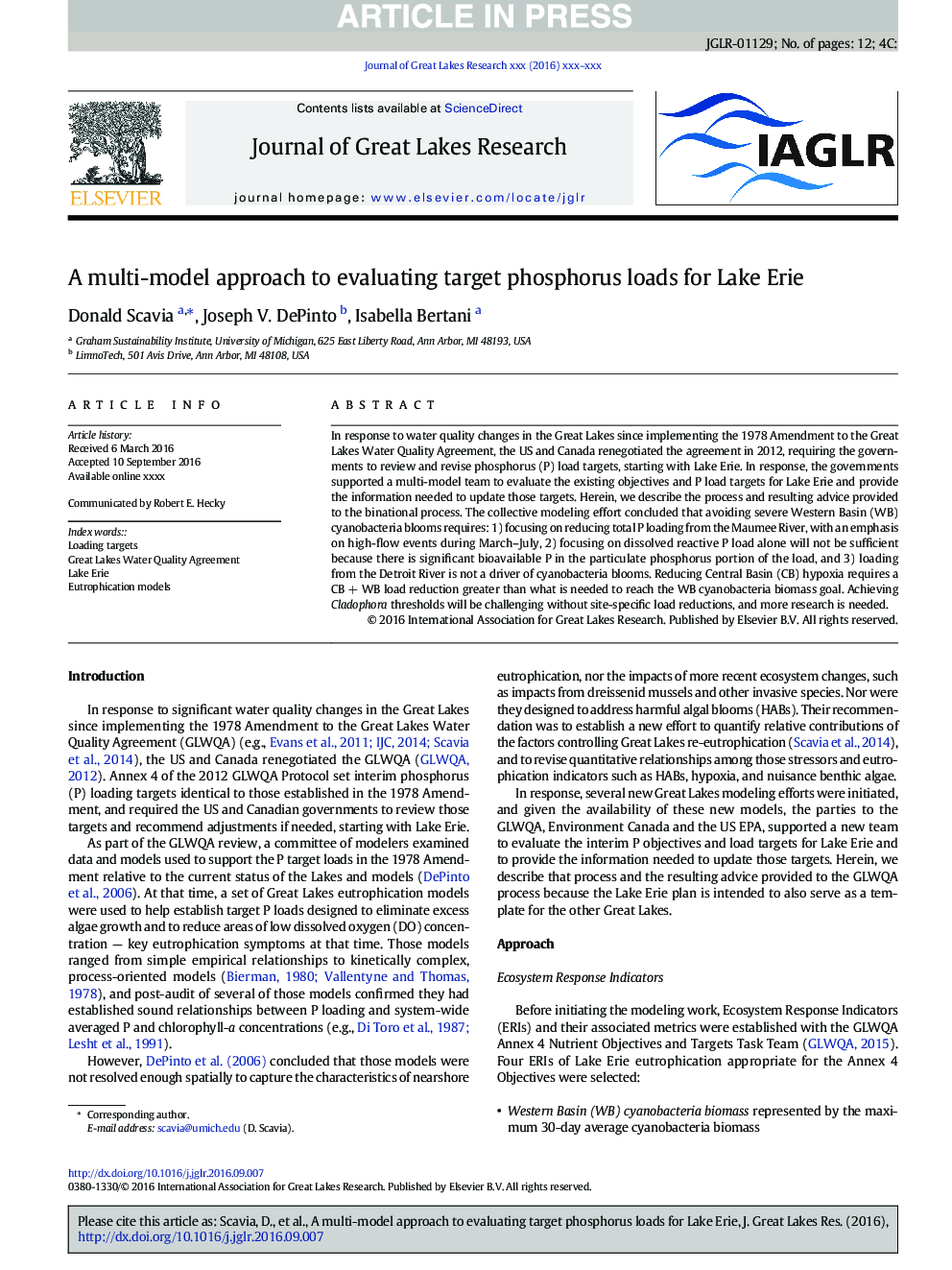| Article ID | Journal | Published Year | Pages | File Type |
|---|---|---|---|---|
| 5744686 | Journal of Great Lakes Research | 2016 | 12 Pages |
Abstract
In response to water quality changes in the Great Lakes since implementing the 1978 Amendment to the Great Lakes Water Quality Agreement, the US and Canada renegotiated the agreement in 2012, requiring the governments to review and revise phosphorus (P) load targets, starting with Lake Erie. In response, the governments supported a multi-model team to evaluate the existing objectives and P load targets for Lake Erie and provide the information needed to update those targets. Herein, we describe the process and resulting advice provided to the binational process. The collective modeling effort concluded that avoiding severe Western Basin (WB) cyanobacteria blooms requires: 1) focusing on reducing total P loading from the Maumee River, with an emphasis on high-flow events during March-July, 2) focusing on dissolved reactive P load alone will not be sufficient because there is significant bioavailable P in the particulate phosphorus portion of the load, and 3) loading from the Detroit River is not a driver of cyanobacteria blooms. Reducing Central Basin (CB) hypoxia requires a CBÂ +Â WB load reduction greater than what is needed to reach the WB cyanobacteria biomass goal. Achieving Cladophora thresholds will be challenging without site-specific load reductions, and more research is needed.
Related Topics
Physical Sciences and Engineering
Earth and Planetary Sciences
Earth and Planetary Sciences (General)
Authors
Donald Scavia, Joseph V. DePinto, Isabella Bertani,
